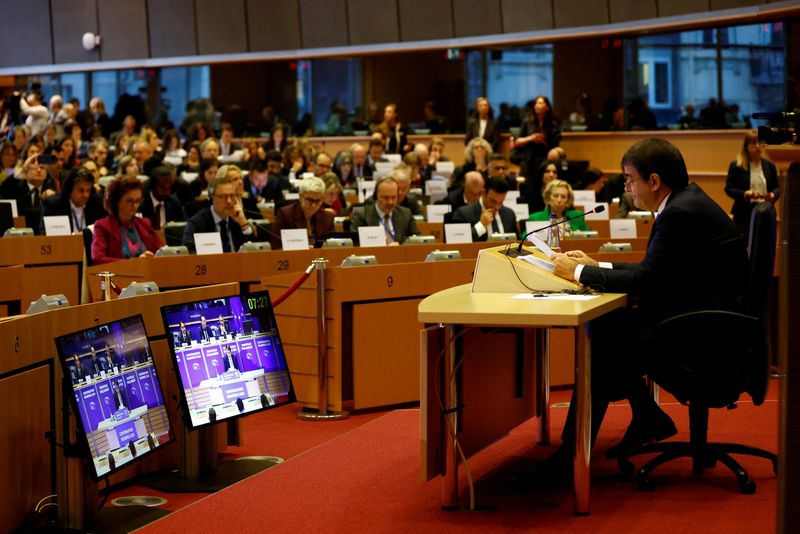By Giuseppe Fonte
ROME (Reuters) – Italy’s record on spending its bumper share of the EU’s post-COVID funds is patchy at best, data showed, as the minister in charge of the matter faced a European Parliament hearing on Tuesday over his prospective new job at the European Commission.
EU Affairs Minister Raffaele Fitto is in line to become the EU Commission’s vice-president for Cohesion and Reforms, a position that would give him responsibility of overseeing EU funds spending by member states, including Italy itself.
If confirmed, Fitto would leave his as-yet unnamed successor in Prime Minister Giorgia Meloni’s government with a tough task.
Italy is due to receive 194.4 billion euros ($206.6 billion) in cheap loans and grants from the bloc’s Recovery and Resilience Facility (RRF) by 2026, more than any other state in absolute terms.
Since the investment programme began in 2021, successive governments in Rome have presented the RRF cash as the key to unlocking the country’s growth potential and modernising its sluggish economy.
However, Italy is behind schedule in using the 113.5 billion euros it has already secured, and also expects the funds to provide less of an economic boost than it had hoped.
Data from the anti-corruption watchdog ANAC seen by Reuters on Tuesday showed that more than 60% of tenders in 2023 and 2024 were still incomplete.
As of Oct. 2, Rome had spent 53.5 billion euros on projects to make Italy’s economy greener, ultra-fast broadband networks and rail infrastructure, the latest available data showed.
This spending represents less than 30% of the total resources to which Italy is entitled, and is below previous government goals, already revised downwards several times.
Tardy implementation puts Italy at risk of losing money unless it renegotiates commitments agreed with Europe.
Delays already come at a cost with the Treasury saying in its multi-year budget plan that the recovery funds were expected to boost GDP growth by just 0.7 percentage points in 2024, one third of the 2.1 points it had originally forecast in April 2022 for the current year.
Complicating matters, the Italian economy is seen as losing traction despite the EU funds and a deficit-to-GDP ratio targeted to fall below the EU’s 3% ceiling only in 2027.
Most analysts and forecasting bodies see growth below 1% both this year, broadly in line with last year’s 0.7% rate and far below the 4.7% reported in 2022.
($1 = 0.9409 euros)

